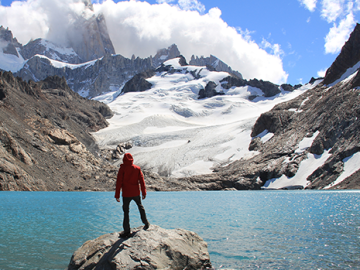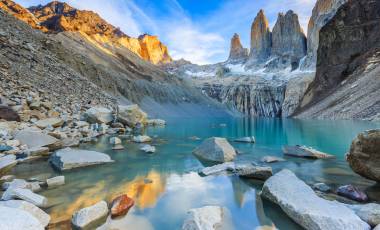There are a whopping 36 Chilean National Parks covering around 35,294 square miles. When you add in the 12 Natural Reserves and 5 Natural Monuments, that’s over 54,000 square miles of land protected by the National Forest Corporation (CONAF), which is 19% of the country’s total territory.
Here’s a look at our picks for nine of the top Chilean National Parks to visit:

1). Torres del Paine National Park
Spanning over 240,000 hectares and averaging over 150,000 annual visitors, this Patagonian gem is among the largest and most visited of the Chilean National Parks.
For those seeking stunning landscapes, there’s the blue icebergs that break off from Grey Glacier, part of the expansive Southern Patagonian Ice Field. For wildlife lovers, there are Foxes, Guanacos, Huemul Deer, Pumas, and the massive Andean Condor. For history lovers, there’s the Milodon Caves and ancient wall art along the Fauna Trail.
But Torres del Paine National Park’s most distinctive features are the three granite peaks of the Paine Massif, which rises 9,350 feet above sea level. The surrounding valleys, rivers, and lakes provide the scenic foreground, but these “Towers of Blue” (for which the park is named) are Patagonia’s most majestic natural wonder.
2). Chiloé National Park
Separated from the Chile mainland by the 1.2-mile wide Chacao Channel, 3,200 square mile Chiloé Island is intensely green. The island is populated by the Chilote people, whose spirituality is rooted in the mythology of forest gnomes, ghost ships and witchcraft.
The national park, which is divided into two sections encompassing 166 square miles on the island’s west coast, offers a diverse assortment of stunning landscapes. There are dunes, Valdivian temperate rainforests, swamps, and peat bogs.
Chiloé is known for its impressive assortment of wildlife, which ranges from Leopard Seals and seabirds to huge colonies of Humboldt and Magellanic Penguins. But one of the national park’s main draws is its whale population, which includes Finbacks, Humpbacks, Seis, Southern Right Whales, and especially Pygmy Blue Whales. The island is one of only four known Blue Whale foraging grounds in the Southern Hemisphere.
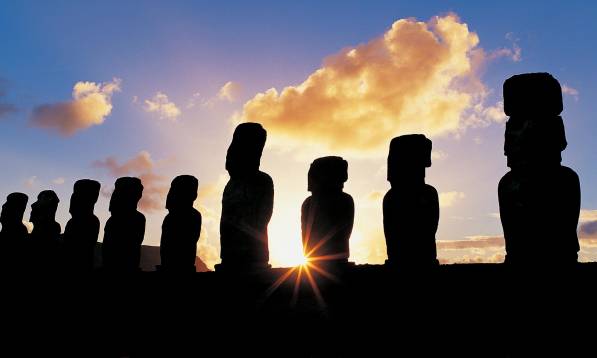
3). Rapa Nui National Park
Located 2,182 miles from mainland Chile in southern Polynesia, Easter Island ranks among the world’s most remote islands. The island is also known as Rapa Nui, named after the island’s native inhabitants.
Rapa Nui National Park, which covers around 40% of the island, is a UNESCO World Heritage Site most famous for its 887 monumental stone statues, called moai. Carved in a style strongly reminiscent of Peru’s Inca civilization, these mysterious figures loom large over the landscape– particularly at Ahu Tongariki, the largest ceremonial site in Polynesia.
From the vast caldera of Rano Kau to the “bird men” petroglyphs of Orongo village, there are plenty of reasons Easter Island should be on every traveler’s bucket list. Especially worthy of note are the 54 subterranean stone houses, which are decorated with countless petroglyphs.
4). Lauca National Park
Located in northern Chile’s Andean range, this 532 square mile national park forms part of the Lauca Biosphere Reserve, along with neighboring Las Vicuñas National Reserve and Salar de Surire Natural Monument.
The park’s attractions are many. For water lovers there’s the Chungará and Cotacotani lakes, as well as the headwaters of the Lauca River. The foothills of the Payachata volcanic group begin here, and both the Guallatiri and Acotango volcanoes are within the park’s boundaries. There are also archaeological sites, lava fields, volcanic calderas, and the small town of Parinacota.
The dry puna ecosystem is home to a remarkable array of wildlife, including Alpacas, Cougars, Guanacos, Llamas, and Vicuñas. Lauca is increasingly earning a reputation as a haven for birdwatchers: There are over 140 species found within the park, including the Andean Condor, Andean Goose, Chilean Flamingo, Puna Ibis, Puna Tinamou, and Silvery Grebe.
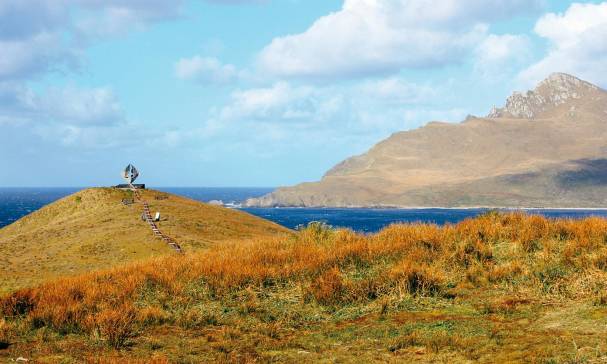
5). Cabo de Hornos National Park
Discovered by Dutch merchant Isaac Le Maire in 1616, Cape Horn is where the Atlantic and Pacific Oceans collide, and is best known as an historic milestone for trade ships sailing around the world.
Cabo de Hornos National Park was established in 1945 and designated as a UNESCO Biosphere Reserve in 2005. The world’s southernmost national park, its 244 square miles encompass the Wollaston Archipelago and the Hermite Islands. The terrain is relatively flat and almost entirely treeless, with two major peaks (1332-foot Cerro Pirámide and 2198-foot Cerro Hyde) looming large above the landscape.
The main reason to visit Cabo de Hornos is the wildlife. Birds such as the Kelp Gull, Red-legged Cormorant, and Southern Royal Albatross are frequently spotted, as are colonies of Magellanic Penguins. And its waters are teeming with marine life, including Leopard Seals, Marine Otters, two species of Dolphin, and Humpback Whales.
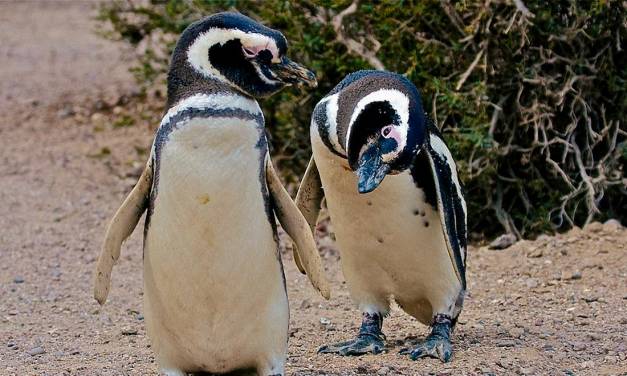
6). Corcovado National Park
Not to be confused with the Costa Rican national park of the same name, Chile’s Corcovado began to take shape began in 1994, when Conservation Land Trust (CLT) and American philanthropist Peter Buckley purchased around 208,000 of pristine coastal land south of Chaiten from a European corporation that had targeted the region for development. Three years later, another 1,235 acres were added.
In 2005, CLT founder Doug Tompkins (who also co-founded North Face) convinced Chilean president Ricardo Lagos to add the privately donated land with the federal land around it, creating a 726,000-acre national park that became the nation’s sixth largest. At its center is the Corcovado Volcano, but it also includes 82 lakes, ancient forests, and brackish estuaries where two rivers spill into the Bay of Corcovado.
As a result, the area is rich with wildlife, from Pumas in the forests and massive colonies of shorebirds and Penguins on the beaches to Seals, Sea Lions, and Blue Whales in the bay. The bay has been proposed to become Chile’s first marine sanctuary, which would ensure Corcovado’s place as an exceptional up-and-coming ecotourism destination.
7). La Campana National Park
Located in Valparaíso 100 miles south of Santiago, La Campana first drew international attention in 1834, when Charles Darwin crested the summit of the hill for which the park is named. The park was declared a UNESCO Biosphere Reserve in 1984 to protect one of the last Chilean Wine Palm forests, which are in danger of extinction.
The tiny 31 square mile park is divided into three areas. Granizo, the largest at 2401 acres, features the Andinista Trail, which leads to the 6,069-foot La Campana hill. Cajón Grande (around 4 acres) and Palmas de Ocoa (13 acres) are considerably smaller, but each features two hiking trails. The longest of these, the 7.5-mile Amasijo-Portezuelo Ocoa Trail, takes hikers into the heart of the Palm forest. Along the way, you’ll have a chance to see a surprising diversity of flora and fauna. There are 320 species of plants found in La Campana, including numerous endemic species found only within the park’s boundaries. There are also around 100 animal species, including Foxes, Chinchillas, and birds such as the Chilean Mockingbird, Diuca Finch, and several different birds of prey.
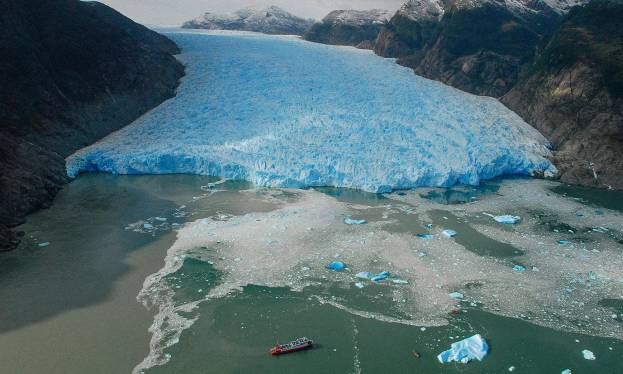
8). Laguna San Rafael National Park
Located on southern Chile’s Pacific coast, this 6,726 sq mile park is named for the San Rafael Lagoon, which was formed by the retreat of a massive glacier.
The park is home to the 1,600 sq mile Northern Patagonian Ice Field, the smaller of the two parts of the Patagonian Ice Sheet. It has 28 exit glaciers, the largest of which are San Rafael and San Quintin. The park also boasts some of the highest Andes mountains in Patagonia, as well as a 10-mile long fjord that is popular for cruising.
Designated a UNESCO World Biosphere Reserve in 1979, Laguna San Rafael is home to an impressive array of wildlife. Its waters are home to marine animals such as Chilean Dolphins, Sea Otters, and Elephant Seals, and birdwatchers can hope to spot Black-browed Albatrosses, Black-necked Swans, and Great Grebes.
9). Parque Pumalín
Parque Pumalín is not actually a National Park… yet. It’s actually the name for one million acres of wild lands in Patagonia that Tomkins Conservation (led by the late Doug Tompkins and his wife Kristine) donated to the Chilean government. Now Chile President Michelle Bachelet has signed an agreement to join Pumalín with 10 million acres of federal land and create five new Chilean national parks. As a result, these 11 million acres– which include virgin forests, volcanoes, and miles of wild coastline– will be placed under strict environmental protection.
The accord is regarded by conservationists as a crucial first step towards uniting Chile’s national parks in what will be known as “the route of parks.” The route will ultimately stretch for nearly 1,500 miles, from the city of Puerto Montt in the north to the Beagle Channel in southernmost Chile.
Travel to Chile’s National Parks
Indulge your wanderlust while discovering Chile’s bounty of wine and wildlife! Join the tour to Chile’s most iconic national parks and natural wonders on one of our small-group tours or private crafted itineraries to Patagonia, Atacama, Easter Island, Chiloe Island and beyond.
